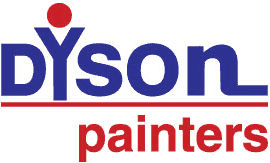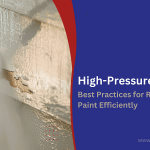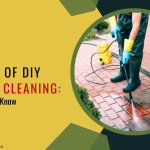When planning to paint your roof, one question often arises: should you high-pressure clean it first? The answer is yes. However, remember that experts do not recommend high-pressure cleaning of your roof if you do not plan to paint it. If you are only looking to clean it, consider soft washing to avoid damage and potential leaks.
High-pressure cleaning removes dirt, grime, and algae and ensures the paint adheres properly. This preparation step can significantly extend the life of your new paint job, making it a worthwhile investment.
Importance of Cleaning Roof Tiles Before Painting
Cleaning your roof tiles is crucial for several reasons. First, dirt and debris can create a barrier between the surface and the paint. This may lead to poor adhesion, resulting in peeling or chipping shortly after application. Moreover, mould and mildew can thrive in unclean conditions, which may compromise the integrity of your roof tiles and affect the overall aesthetic of your property.
High-pressure cleaning effectively eliminates these contaminants, creating a clean slate for your paint. This not only enhances the appearance of your roof but also protects it from future damage. Regular maintenance, including professional high-pressure cleaning, can extend the lifespan of your roof and reduce the frequency of costly repairs.
Types of Roof Tiles
Understanding the types of roof tiles is essential for effective cleaning and painting. Concrete tiles are durable and less porous, making them easier to clean. High-pressure cleaning can efficiently remove stubborn stains without damaging the surface. On the other hand, terracotta tiles are more porous and delicate. While medium-pressure cleaning can still be used, caution is necessary to avoid chipping or breaking the tiles.
Prepare Your Roof for Cleaning
Safety Measures
Safety should always be the top priority. Wear appropriate personal protective equipment, including safety goggles, gloves, and a mask, to protect yourself from dust and debris. Make sure your ladder is stable and positioned on a flat surface. If you’re not comfortable working at heights, consider hiring professionals who specialise in commercial pressure cleaning to handle the task safely.
Necessary Equipment
For an effective high-pressure cleaning job, you’ll need the right equipment. A quality pressure washer is essential. It should have a minimum pressure rating of 2,500 psi. Additionally, gather a sturdy ladder, a spray nozzle with adjustable pressure settings, and a garden hose for rinsing. Consider using a cleaning solution designed for roof tiles to help break down stubborn stains and algae.
Steps to Cleaning Roof Tiles
- Remove Loose Debris: Start by clearing off leaves, twigs, and any other loose debris from your roof. Use a broom or blower to ensure a clean surface before washing.
- Use a High-Pressure Power Washer: Connect your power washer to a water source and adjust the nozzle to a wider spray pattern. Begin at the highest point of your roof, working your way down in sections. Keep the nozzle at a consistent distance of about 12 to 18 inches from the surface to avoid damaging the tiles.
- Tackle Stubborn Stains and Growth: For tough stains or algae, apply a suitable cleaning solution and allow it to sit for a few minutes before rinsing with the pressure washer. This step will help eliminate any remaining contaminants, ensuring a clean surface for painting.
By following these steps, you’ll effectively prepare your roof for painting, leading to a more durable and aesthetically pleasing finish.
Risks and Considerations
While high-pressure cleaning is an effective method for preparing your roof for painting, it does come with risks and considerations that property owners should be aware of.
Potential Damage to Roofing Material
One of the primary concerns with high-pressure washing is the potential damage to roofing materials. Using incorrect pressure settings or techniques can lead to chipping, cracking, or even dislodging tiles, particularly with more delicate materials like terracotta. For instance, settings above 2,500 psi may be excessive for certain roof types. Always start with the lowest pressure setting and gradually increase it as needed, ensuring you’re not damaging the surface.
Safety Concerns
Safety is paramount when performing high-pressure cleaning. Working from heights can be hazardous, so always use a stable ladder and consider having a partner present. Ensure your ladder is on a firm, level surface to prevent accidents. Additionally, wearing safety gear protects you from debris and cleaning agents.
Environmental Impact
Lastly, it’s crucial to consider the environmental impact of high-pressure washing. The process uses a significant amount of water, which can be a concern in areas prone to drought. Moreover, the runoff of cleaning agents can contaminate local waterways. Opting for eco-friendly cleaning solutions can help mitigate these effects. Additionally, be mindful of directing the runoff away from gardens or sensitive areas.
Alternative Methods to High-Pressure Cleaning
While high-pressure cleaning is a popular choice for preparing roofs for painting, there are alternative cleaning methods that can also be effective. Understanding these options allows you to select the best approach based on your specific needs and roof conditions.
Soft Washing
Soft washing involves the use of a gentle water stream along with specific cleaning solutions to eliminate dirt, algae, and other impurities. Unlike high-pressure washing, which can potentially damage fragile roofing materials, soft washing is gentler and suitable for all types of roof tiles, including terracotta and shingles.
Effectiveness and Safety: Soft washing removes organic growth and stains from the roof effectively without posing a risk of damage. The cleaning solution typically contains biocides that clean and inhibit future growth. This method is advantageous for roofs that have significant moss or algae growth, as it penetrates these stubborn contaminants better than just water pressure alone.
Manual Scrubbing
Manual scrubbing involves physically cleaning the roof with brushes or scrubbers, often combined with a cleaning solution. This method is labour-intensive but can be effective for the localised cleaning of stubborn stains or small areas.
Effectiveness and Safety: While manual scrubbing can be effective, it requires more effort and can be time-consuming. It’s also less likely to damage roofing materials compared to high-pressure cleaning. However, it may not be as effective for extensive cleaning tasks or for roofs that are heavily soiled.
Comparing Methods
When comparing these alternative methods to high-pressure washing, several factors come into play, including roof material, the extent of contamination, and property owner preferences.
- Roof Material: For delicate materials, soft washing is typically safer than high-pressure washing. Manual scrubbing is also a gentle option that minimises the risk of damage.
- Extent of Contamination: If a roof has a significant buildup of grime or organic growth, high-pressure cleaning may be more effective in quickly addressing the issue. However, if the contamination is primarily surface-level, soft washing or manual scrubbing may suffice.
- Safety Concerns: Property owners concerned about the risks of working at heights or operating high-pressure equipment might prefer soft washing or hiring a professional service.
When to Hire a Professional
While DIY cleaning methods can be effective, there are significant advantages to hiring professional high-pressure cleaning services.
Advantages of Hiring Professionals
- Expertise: Professionals have the experience and knowledge to determine the best cleaning method for specific roof conditions. They can assess the level of contamination and choose the right equipment and cleaning solutions.
- Equipment: Professional services utilise advanced equipment that delivers consistent results without the risks associated with consumer-grade tools. High-quality pressure washers, soft washing equipment, and specialised cleaning agents can enhance cleaning efficiency.
- Safety: Professionals are trained in safety protocols and have the necessary safety gear, reducing the risk of accidents during cleaning. They also know how to handle complex roof structures and navigate potential hazards.
Tips for Choosing a Reputable Cleaning and Painting Company
When selecting a professional service for high-pressure cleaning and painting, consider the following tips:
- Check Credentials: Ensure the company is licensed, insured, and has good standing with local regulatory bodies. This protects you from liability in case of accidents or damages.
- Read Reviews: Look for customer reviews and testimonials online. Positive feedback from previous clients can indicate the quality of service and reliability.
- Ask for Quotes: Obtain quotes from multiple companies to compare prices and services. Be wary of extremely low quotes, as they may reflect subpar quality or hidden costs.
- Inquire About Techniques: Ask the company about the cleaning methods they use. Ensure they employ safe and effective techniques, whether high-pressure cleaning, soft washing, or manual scrubbing.
- Evaluate Communication: A reputable company should be responsive and transparent in their communication. They should be willing to answer questions and provide detailed explanations about their services.
Call Us for a No-Obligation Consultation Today!
Commonly Asked Questions
Can I high-pressure clean my roof if it’s been recently painted?
If your roof has been freshly painted, it’s best to avoid high-pressure cleaning. Doing so can damage the paint layer and cause it to peel or chip. Instead, consider light washing or gentle scrubbing to remove dirt without harming the surface. You can also use high-pressure washing to remove old paint. Read more here.
What should I do if I notice damage after high-pressure cleaning?
If you find damage post-cleaning, document it with photos and contact the cleaning service immediately. A reputable company will address any issues and may offer to repair the damage, depending on their policies.
Are there specific weather conditions that affect high-pressure washing?
Yes, avoid high-pressure cleaning during extreme weather conditions, such as heavy rain or strong winds. Wet surfaces can be slippery, and adverse conditions can compromise safety and cleaning effectiveness.
Is it safe to use high-pressure washing on roofs with solar panels?
It’s crucial to be cautious with solar panels. High-pressure cleaning can damage them. Instead, use a gentle cleaning method or hire professionals who have experience working around solar installations.
How often should I consider cleaning my roof?
Most roofs benefit from cleaning every 1 to 3 years, depending on local environmental factors, such as heavy rainfall or proximity to trees. Regular maintenance helps prevent algae growth and prolongs the lifespan of your roof.
Trust Our Painters in Hobart for High-Pressure Cleaning and Painting Services
Is your commercial property in need of a facelift? First impressions matter, and a clean, well-maintained exterior is key to attracting clients and tenants. Trust experienced painters in Hobart at Dyson Painters to handle both high-pressure cleaning and professional painting services tailored for commercial properties.
Our team uses advanced pressure cleaning techniques to remove stubborn dirt, grime, and algae, ensuring your building’s exterior is pristine and ready for painting. We then apply premium, durable paints designed to withstand the elements and keep your property looking its best for years to come. Whether you manage an office building, retail space, or industrial facility, we have the expertise to deliver exceptional results that enhance your property’s value and appeal.
Let us help you make a lasting impression. Contact us at 0420-213-214 or email us at admin@dysonpainters.com.au for a free consultation and discover how our high-pressure cleaning and painting services can revitalize your commercial or residential property. Call now to schedule your service!





